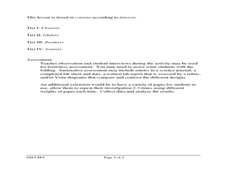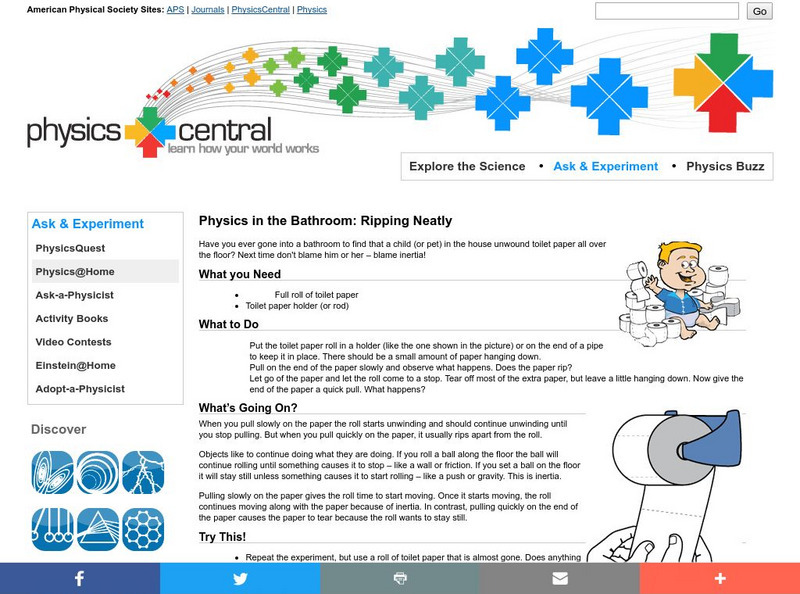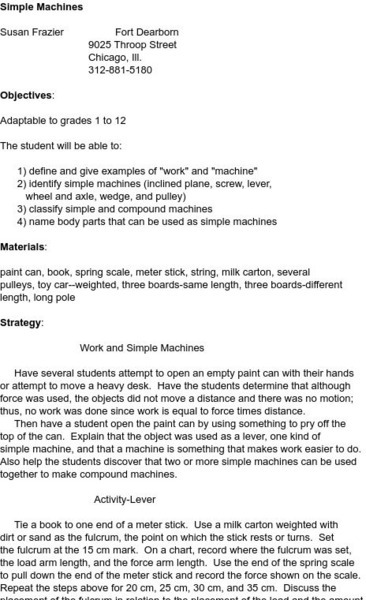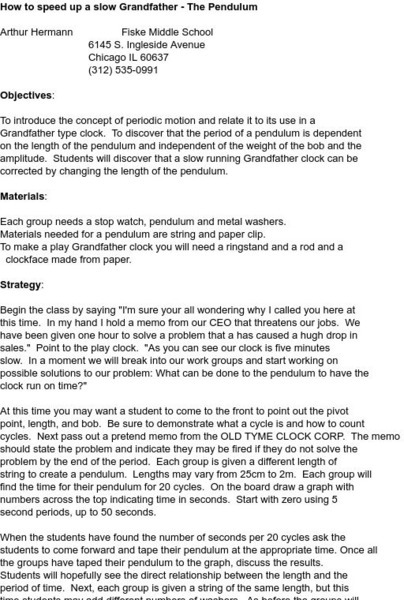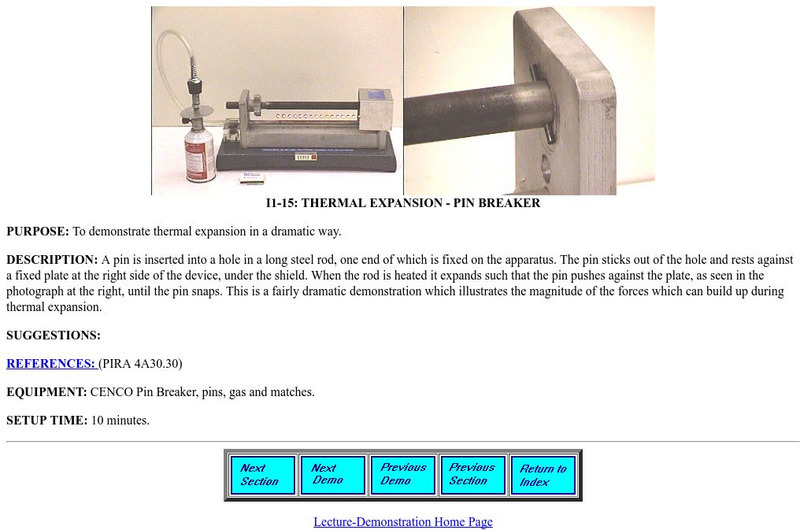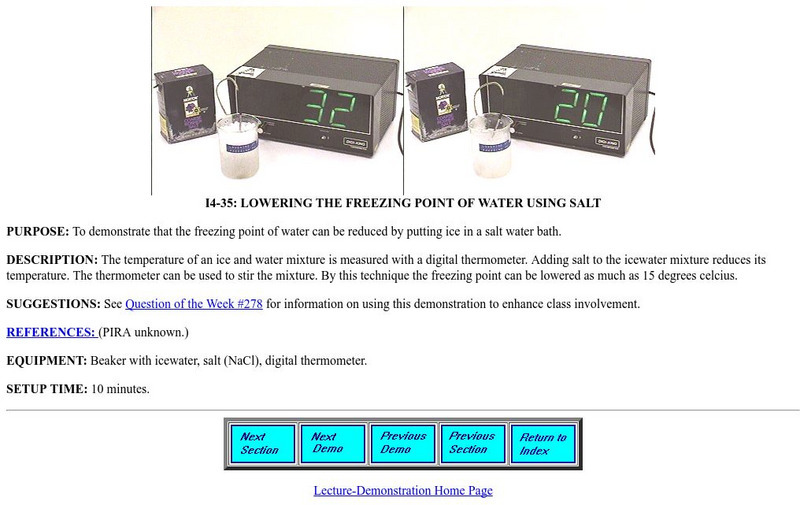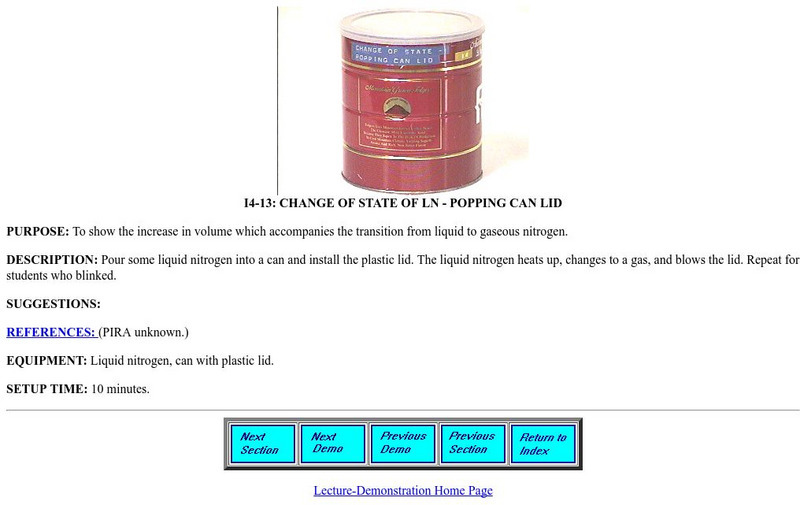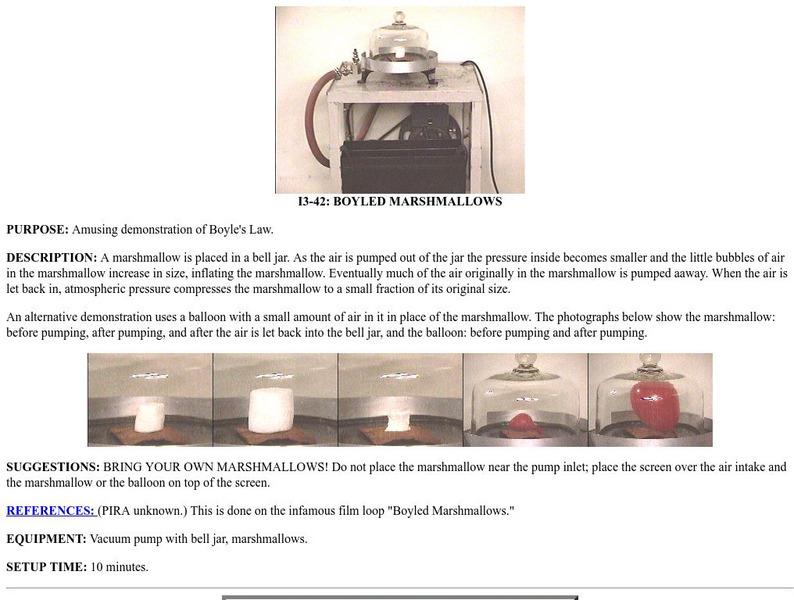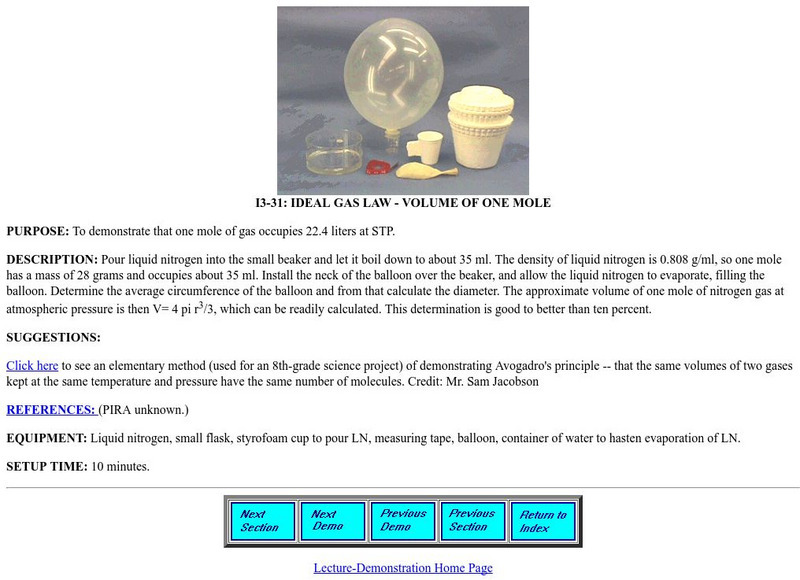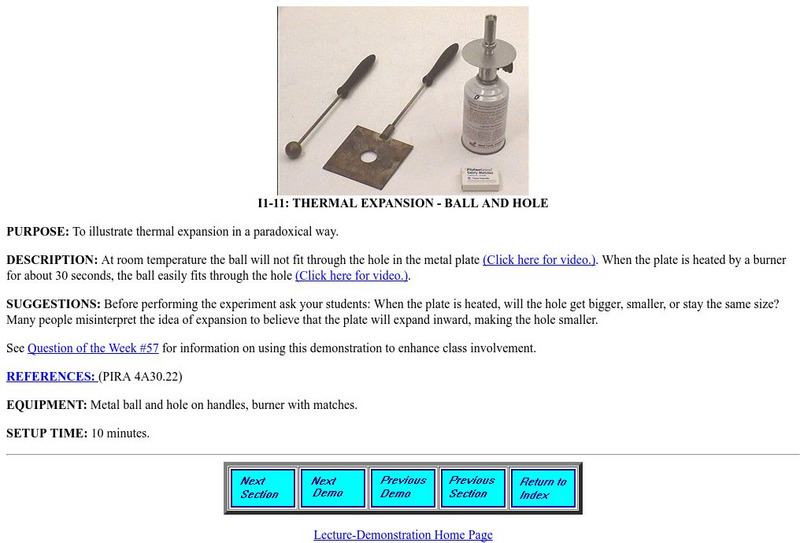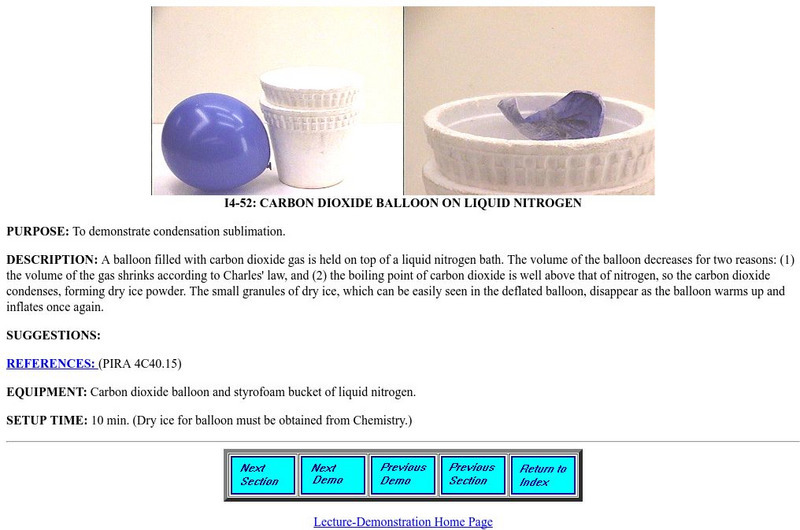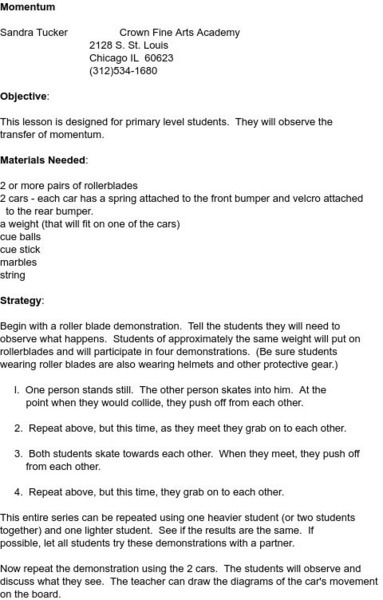Curated OER
Origami Flight: The Physical Setting
Sixth graders investigate the forces that move certain objects. For this physics lesson, 6th graders design and create paper flying objects using origami methods, which they practice flying in different conditions. Students...
Curated OER
Aeronautics: Bernoulli's Principle
Students explore physics by participating in a science activity in class. In this flight properties instructional activity, students identify Bernoulli's principle of flight and his theory of statics and motion. Students conduct a...
Physics Central
Physics Central: Physics in the Bathroom: Ripping Neatly
A great science experiment to demonstrate Newton's First Law of Motion, inertia. There is a step-by-step guide on how to conduct this experiment and links to other sites about inertia.
University of Maryland
University of Maryland: Boiling at Reduced Pressure
A page from the University of Maryland Physics Lecture Demonstration Facility. Provides directions for a teacher demonstration of the dependency of the boiling point upon pressure. Shows apparatus and set-up; provides suggestions. Easily...
Physics Classroom
The Physics Classroom: Inertia and Mass
This is part of a lesson on Newton's Laws of Motion that focuses on inertia and mass. It restates Newton's first law of motion. The lesson also gives a helpful visual description concerning friction.
Science and Mathematics Initiative for Learning Enhancement (SMILE)
Smile: Newton's Laws of Motion
Lesson plan from the Illinois Institute of Technology that incorporates many demonstrations like pulling a tablecloth from under a place setting, or launching a rocket to show Newton's laws.
Science and Mathematics Initiative for Learning Enhancement (SMILE)
Smile: Simple Machines (Grades 1 To12)
In this lesson plan students start by trying to open a paint can with their bare hands. Eventually, they will use a lever to open it. Various activities are used to enforce different simple machines.
Science and Mathematics Initiative for Learning Enhancement (SMILE)
Smile: Projectiles
Lesson plan in which students will observe demonstrations and interact with various objects dealing with projectile motion. Subject matter for intermediate or middle school.
Science and Mathematics Initiative for Learning Enhancement (SMILE)
Smile: How to Speed Up a Slow Grandfather: The Pendulum
In this lesson plan students are "given one hour to solve a problem that a has caused a huge drop in sales" for a clock company. All clocks are five minutes slow. Because of this, they must find a way to put the clock back on time...
University of Maryland
University of Maryland: Thermal Expansion Pin Breaker
A page from the University of Maryland Physics Lecture Demonstration Facility. Provides directions for a teacher demonstration of thermal expansion. Shows apparatus and set-up; Provides suggestions. Easily adaptable as a student project...
University of Maryland
Lowering the Freezing Point of Water Using Salt
A page from the University of Maryland Physics Lecture Demonstration Facility. Provides directions for a teacher demonstration of the effect of an ionic solute upon the freezing point of water. Shows apparatus and set-up; provides...
University of Maryland
U. Of Maryland: Change of State of Liquid Nitrogen
A page from the University of Maryland Physics Lecture Demonstration Facility. Provides directions for a teacher demonstration of the vaporization of liquid nitrogen. Shows apparatus and set-up; provides suggestions. Easily adaptable as...
University of Maryland
University of Maryland: Boiling Water by Pumping
A page from the University of Maryland Physics Lecture Demonstration Facility. Provides directions for a teacher demonstration which utilizes a Bell jar and vacuum pump to show the dependency of boiling point upon pressure. Shows...
University of Maryland
U. Of Maryland: Latent Heat: Ice to Water to Steam
A page from the University of Maryland Physics Lecture Demonstration Facility. Provides directions for a teacher demonstration of latent heat in the melting and vaporization process. Shows apparatus and set-up; provides suggestions....
University of Maryland
University of Maryland: Absolute Zero
A page from the University of Maryland Physics Lecture Demonstration Facility. Provides directions for determining the value of absolute temperature. Shows apparatus and set-up; provides suggestions. Easily adaptable as a student project...
University of Maryland
University of Maryland: Boyled Marshmallows
A page from the University of Maryland Physics Lecture Demonstration Facility. Provides directions for a teacher demonstration of Boyle's law. Shows apparatus and set-up; provides suggestions. Easily adaptable as a student project or lab...
University of Maryland
University of Maryland: Ideal Gas Law Volume of One Mole
A page from the University of Maryland Physics Lecture Demonstration Facility. Provides directions for a teacher demonstration of the ideal gas law. Shows apparatus and set-up; provides suggestions. Easily adaptable as a student project...
University of Maryland
University of Maryland: Thermal Expansion: Ball and Hole
A page from the University of Maryland Physics Lecture Demonstration Facility. Provides directions for a teacher demonstration of thermal expansion. Shows apparatus and set-up; provides suggestions. Easily adaptable as a student project...
University of Maryland
Um: Carbon Dioxide Balloon on Liquid Nitrogen
A page from the University of Maryland Physics Lecture Demonstration Facility. Provides directions for a teacher demonstration of sublimation. Shows apparatus and set-up; provides suggestions. Easily adaptable as a student project or lab...
Science Bob Pflugfelder
Science Bob: Make a Paperclip Float!
Presents a procedure for getting a paper clip to float in water. Following the procedure, the site gives a brief explanation and discussion of surface tension.
Science and Mathematics Initiative for Learning Enhancement (SMILE)
Smile: Objects Race
In this lesson plan grab a slope and different objects. Roll the objects down the slope and record which is the fastest. Students analyze the features of the objects that make them slow or fast.
Science and Mathematics Initiative for Learning Enhancement (SMILE)
Smile: Transfer of Momentum
This instructional activity designed for primary level students, describes the bodily-kinesthetic method of showing the conservation of momentum with students rollerblading, using cars, and colliding marbles.
Science and Mathematics Initiative for Learning Enhancement (SMILE)
Smile: Electric Currents and Circuits
This cooperative learning activity for intermediate to junior high students has them create various electrical circuits in order to understand electricity.


